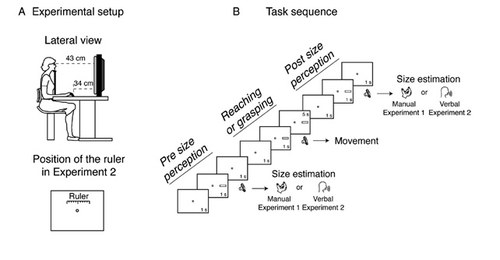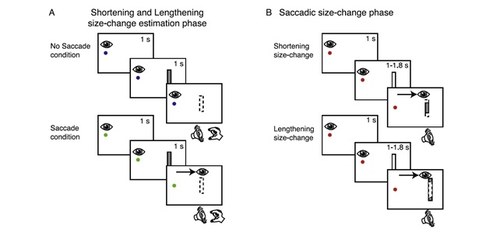- Home
- Research Interests Apri sottomenù
- Publications
- People
-
Projects
Apri sottomenù
- Progetto PNC - Fit4MedRob - Interfacce Neurorobotiche Ibride per il Controllo e il Recupero della Funzionalità Motoria e Verbale (NeuroRobCoRe)
- Progetto PNC - Fit4MedRob - Sistema innovativo per l'Analisi del Movimento e il Monitoraggio in Tempo Reale del Tremore (SMART-tremor)
- PRIN2022 - MulWalk
- Partenariato Esteso, funded by PNRR - Mnesys
- MSCA Staff Exchanges - PLACES
- PRIN 2020
- FETPROACT-2019 MAIA
- HumaneAINet
- Ricerca Finalizzata 2019 - GR-2019-12369242
- PRIN2017 - PACE
- H2020-MSCA-RISE-2016 - Platypus
- Agenda
Human Psychophysics of perception and action

Action and perception experiments
In our everyday life, reaching and grasping are major aspect of hand performance in manipulating objects. When we reach to grasp an object, our hand is moved towards the target. Also, the hand is pre-shaped according to object’s intrinsic properties (size and shape) in order to make appropriate grip of it. The relationship between the perception of these object properties and action usually supports the idea that a primary goal of perception is action. However, several behavioral studies have shown evidence for an “action-modulated perception” mechanism that automatically enhances relevant object features during action preparation. Following this perspective, we found significant modifications of perceived size of objects more pronounced after grasping than after reaching. This modification of perceptual responses after grasping movements demonstrated that the action type dynamically modulates size perception by shaping it according to relevant information required to recognize and interact with objects1 (Fig. 1).
1. Bosco A., Daniele F., Fattori P. (2017) Reaching and grasping actions and their context shape the perception of object size. J Vis, 2017 Oct 1;17(12):10. doi.1167/17.12.10.

Adaptation in oculomotor system in collaboration with Prof. Markus Lappe
Our brain explores the external world by saccadic eye movements that are controlled by plastic mechanisms. This plasticity is commonly studied by means of saccadic adaptation, a learning process that ensures accuracy in the face of changes in motor dynamics due to daily fatigue, aging, or pathology. We addressed this question testing participants in systematic shortening and lengthening of a visual target. Before and after a phase of trans-saccadic changes of the target, participants manually indicated the sizes of the stimuli presented2 (Fig. 1). We demonstrated that saccadic adaptation can be induced by modifying target object size and a change in size percetion can be induced trans-saccadically, but its mechanism does not depend on saccadic amplitude change.
1. Bosco A., Lappe M., Fattori P. (2015) Adaptation of saccades and perceived size after trans-saccadic changes of object size. J Neurosci, 35(43):14448-14456.
2. Bosco A., Rifai K., Wahl S., Fattori P., Lappe M. Trans-saccadic adaptation of perceived size independent of saccadic adaptation. J Vis 2020 Jul 1;20(7):19. doi:10.1167/jov.20.7.19.